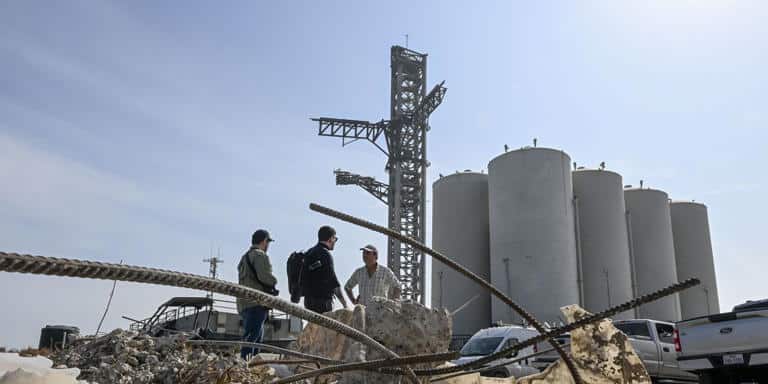
Unintended Fireworks: How SpaceX Accidentally Blew Up Its Own Launch Pad and Ignited a State Park
- Technology
- 13 May 2023
- No Comment
- 174
Introduction: SpaceX, renowned for its ambitious space missions, recently faced a major setback during a Starship launch that resulted in the destruction of its own launch pad. The incident unleashed a cloud of debris, sent chunks of concrete flying, and even sparked a fire in a nearby state park. As experts delve into the cause of the explosion, the Federal Aviation Administration (FAA) has grounded the Starship, putting SpaceX’s future test flights on hold. This unexpected turn of events serves as a reminder that even the most groundbreaking endeavors can encounter hurdles when moving at a rapid pace.
The Explosive Fallout: During the ill-fated launch, SpaceX’s launch site underwent a catastrophic event that left the area resembling a crater. The FAA swiftly initiated an investigation to determine the exact cause of the incident. The aftermath of the explosion was far-reaching, as a cloud of dust and debris swept through the neighboring town of Port Isabel, coating everything in its path. The impact was severe, shaking buildings, shattering windows, and causing disruption throughout the community.
Environmental Consequences: The consequences of the launch mishap extended beyond property damage. Boca Chica State Park, located nearby, fell victim to the chaos as it caught fire. Over 3.5 acres of land, including parts of the state park, were engulfed in flames. While wildlife officials have yet to report any casualties among the protected species inhabiting the park, the disruption caused by the incident has raised concerns about the animals’ behavior and their sensitive habitat.
The Cost of Moving Fast: SpaceX’s Starship project represents a revolutionary leap in space exploration, boasting the largest rocket ever built and a reusable design that promises to revolutionize the cost of space missions. However, the recent test launch highlighted a potential flaw in the safety measures. Experts noted the absence of a flame trench or a water-cooled system, which could have diverted the fiery fuel away from the launchpad. Elon Musk, SpaceX’s CEO, admitted on Twitter that the company had underestimated the potential risks associated with the launchpad’s foundation.
Recovery and Lessons Learned: The aftermath of the explosion and subsequent fallout necessitates a comprehensive recovery plan. SpaceX is poised to take responsibility for the cleanup efforts, collaborating with local authorities and environmental organizations to restore the affected areas. The incident has not only triggered a reevaluation of safety protocols but has also emphasized the importance of meticulous planning and risk management when pushing the boundaries of innovation.
The Road Ahead: While setbacks are an inherent part of testing revolutionary technology, the magnitude of this incident has highlighted the need for caution and careful decision-making. SpaceX will have to reapply for its launch license before proceeding with future test flights, potentially resulting in significant delays. This humbling experience underscores the challenges faced by pioneers in their relentless pursuit of progress.
Conclusion: SpaceX’s explosive misstep serves as a cautionary tale, reminding us that even the most groundbreaking ventures can encounter unforeseen obstacles. The incident underscores the need for continuous improvement in safety measures and highlights the delicate balance between innovation and responsible decision-making. As SpaceX regroups and takes steps to rectify the situation, the setback stands as a testament to the resilience and adaptability of those at the forefront of technological advancement.


